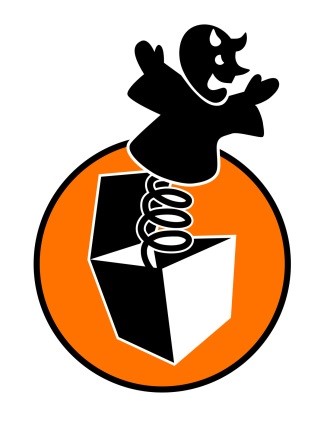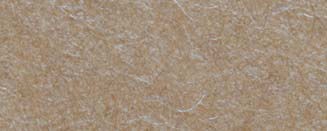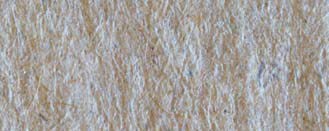 When the little clown or toy pops out of the box, it usually sparks joy and amazement. When opened parcels are delivered to recipients, however, these are certainly not a source of amusement. Incorrectly sealed packages result in anger and displeasure. The first place people tend to look to find the fault is the glue, which is designed to securely fasten the cardboard box’s lid. But that’s not always true.
When the little clown or toy pops out of the box, it usually sparks joy and amazement. When opened parcels are delivered to recipients, however, these are certainly not a source of amusement. Incorrectly sealed packages result in anger and displeasure. The first place people tend to look to find the fault is the glue, which is designed to securely fasten the cardboard box’s lid. But that’s not always true.
The reliability of a box’s seal or fastener is influenced by a number of factors: The choice of hot-melt adhesive, the restoring forces on the cover flap, and the quality of the packaging surface. But it’s the surface of the cardboard material that’s crucial when it comes to securely fastened packages.
Read on, as we tell you more about the role packaging material plays when choosing a hot-melt adhesive.
If the cover is not properly fastened and opens back up again, it’s time to start looking for the source of the problem. And the devil is often in the detail here. What’s considered common knowledge for cardboard-box manufacturers may not necessarily be so for packagers/end customers.
As such, not every user is aware that cardboard comes in many different forms, and that the board’s composition can significantly affect adhesion. The cardboard surface can vary greatly. The board is categorised based on its percentage of recycled paper, and a rough distinction is initially made between kraft liner, test liner and low-grade paper.

Kraftliner (source: Moosmann GmbH & Co. KG, Ravensburg)
Cardboards are classified as kraft liners if they are made from bleached and unbleached sulphate pulp (min. 70% fresh fibre). They are largely tear-proof and moisture-resistant, with a small percentage of recycled fibres. Dark brown in colour with no impurities, kraft liners are predominantly used as covers in corrugated-cardboard production. Kraft liners have a smooth surface of even-length fresh fibres.

Testliner (source: Moosmann GmbH & Co. KG, Ravensburg)
Test liners, on the other hand, are almost 100% used paper, and are split into three categories based on the quality of the paper sorting. T1 contains high-quality used paper, while other categories with decreasing paper quality are labelled T2 and T3. The paper’s stiffness is comparable with that of the kraft liner, while the colour is pale brown with slightly visible speckling. The paper has a grammage of approx. 125 gsm, and an undetermined pulp composition. It is similarly used as a cover material in corrugated cardboard. The cheaper test liners have an uneven surface of recycled fibres of varying lengths. The fibres get shorter and shorter with each recycling process.

Schrenz (source
Unsorted used paper is used to manufacture low-grade paper. This simple material serves as the inner lining for low-quality corrugated cardboard or as parcel-wrapping paper. It is grey, with a clearly visible play of colours and (dirt) speckling.
The shorter fibres in recycled paper need more binding agents and additives. The percentage ratios of the admixtures within the paper mixture often fluctuate. These additives change the paper’s surface tension, and the modified polarity affects the hot-melt adhesive used. A hot-melt adhesive that securely seals a kraft liner may fail on low-grade paper.
Restoring force: the force that restores an elastic system to equilibrium after it became unbalanced.
In terms of sealing/fastening cardboard, the restoring force describes the cover flap’s impulse to return to its original position.
If the paper material also has strong restoring forces on the cover flap, these need to be taken into account when choosing an adhesive.
The restoring force is material-specific, and depends on the type of creasing. The material is intentionally weakened at the creasing to reduce bend resistance. If the fibre composite at the creasing is destroyed by pre-folding the paper material, the active forces will also be reduced. The restoring forces on the cover flaps are increased if the box is overfilled during packing. The resulting tension places a great strain on the adhesive joint. The hot-melt adhesive must thus be chosen dependent to the entire handling process.
The way the packaging material is stored, and the parcels transported, also affects gluing properties. For example, is the cardboard stacked and the adhesive joint put under strain? The cardboard absorbs the moisture in the air, and usually quickly adopts the ambient temperature (this is important, e.g. in the case of deep-frozen packaging or warm fillings). The diffused moisture impacts the cardboard’s firmness and adhesion internally and externally.
The modified paper quality resulting from environmental factors, temperature fluctuations and transportation is another aspect to bear in mind when choosing an adhesive.
Paper manufacturers go to great lengths to explore the printability of their products. We would like to take this opportunity to encourage you to focus more on their gluing properties in order to minimise complaints.
We’ll find a suitable solution for your needs, and also gladly test the gluing properties of your cardboard boxes. Get in touch with us.
